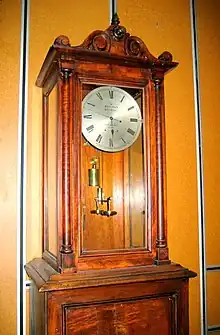Arthur Beverly (22 March 1822 – 25 October 1907) was a New Zealand watchmaker, mathematician and astronomer.[1]

He was born the son of farmer George Beverly in Stonehaven, Aberdeenshire, Scotland and was educated at home and by a local shoemaker in the evenings. He was apprenticed at 14 to an Aberdeen watchmaker and optician, where he made a reputation as a lensmaker. After he made a set of microscope lenses for Dr George Dickie, professor of botany at the University of Aberdeen, Dickie recommended him to other scientists.

In 1852 he sailed to Australia and after a spell in the goldfields moved to Melbourne to work as a watchmaker, moving on to New Zealand in 1858, where he set up a business in Dunedin. In the New Zealand Exhibition of 1865 he exhibited a clock, known as the Beverly Clock, which used the daily variation in temperature to wind itself up and a planimeter to measure the area of irregular shapes.[2] He was awarded the Makdougall Brisbane medal of the Royal Scottish Society of Arts in 1865 for his planimeter design.
He was also very interested in astronomy and built his own 3 inch telescope. The Beverly-Begg Observatory is named in his honour. Other interests of Beverly's included botany and he was influential in the support of the Otago Museum.[3]
He died unmarried in 1907, leaving his money to the University of Otago.
References
- ↑ "Story: Beverly, Arthur". Te Ara. Retrieved 4 April 2017.
- ↑ Amon, Hardwicke Knight and L. E. S. "Arthur Beverly". Dictionary of New Zealand Biography. Ministry for Culture and Heritage. Retrieved 1 December 2011.
- ↑ "Arthur Beverly". Toitū Otago Settlers Museum. 2023. Retrieved 22 June 2023.